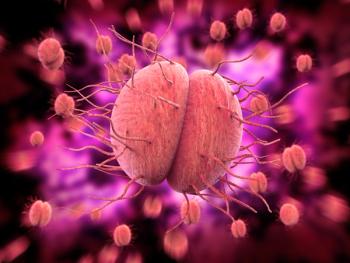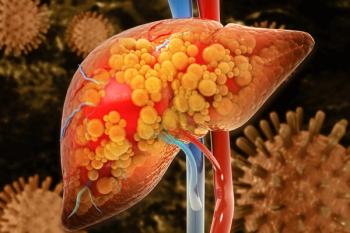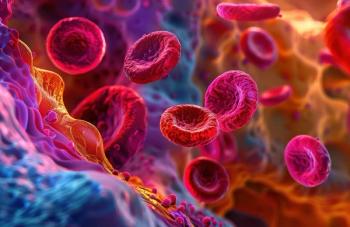
With Hidradenitis Suppurativa, Maternal and Offspring Outcomes May Suffer
Key Takeaways
- Maternal HS is associated with increased risks of hypertensive disorders, gestational diabetes, and severe maternal morbidity during pregnancy.
- Neonates of mothers with HS have higher risks of preterm birth and birth defects, with a 30% increased risk.
Novel evidence has emerged from a 16-year study that hidradenitis suppurativa can elevate risks of not only pregnancy and postpartum complications, but of morbidity—particularly metabolic- and immunology-related morbidity—for mother and child in the long term.
Maternal
HSmay be associated with other pregnancy-impacting autoimmune and endocrinologiccomorbidities as well, yet few previous studieshave looked at the effect of HS—which usually presents after puberty—on maternaland offspring outcomes.2-4
The study included 1,324,488 deliveries that occurred in Quebec, Canada, between 2006 and 2022, including 1332 (0.1%) among mothers with HS.
HS is linked to adverse maternal and offspring outcomes both in the peripartum period and in the long term, indicated the study results. Post pregnancy, HS was associated with up to 2.5 times the long-term risk of metabolic, infectious, and other morbidity in mothers and offspring. Neonates born to mothers with HS had a 30% greater risk of preterm birth and birth defects, added the authors.
Negative outcomes are not necessarily foregone conclusions, however: the researchers declared that early detection of HS, and its conscientious management, could help mitigate these potential difficulties.
Detailed Findings
Compared with patients without HS, patients with HS had higher risk of hypertensive disorders of pregnancy (risk ratio [RR], 1.55; 95% CI, 1.29-1.87), gestational diabetes (RR, 1.61; 95% CI, 1.40-1.85), and severe maternal morbidity (RR, 1.38; 95% CI, 1.03-1.84) at delivery. In neonates, maternal HS was associated with risk of preterm birth (RR, 1.28; 95% CI, 1.07-1.53) and birth defects (RR, 1.29; 95% CI, 1.07-1.56).
Over the long term, HS was associated with 2.29 (95% CI, 2.07-2.55) times the risk of maternal hospitalization and 1.31 (95% CI, 1.18-1.45) times the risk of childhood hospitalization. This included hospitalization for respiratory, psychiatric, and gastrointestinal issues, but particularly for metabolic and immune-related morbidity, including infection and allergy. The authors asserted that the associations could not be explained by a range of other factors, including maternal age, comorbidity, multiple birth, and socioeconomic deprivation.
More About HS
Disproportionately affecting individuals of reproductive age, HS is a chronic inflammatory disorder. Elevated levels of proinflammatory cytokines play a significant role in how HS contributes to pregnancy risks, including preeclampsia, gestational diabetes, and preterm birth, the investigators described. Additionally, patients with HS may experience recurrent follicular lesions in intertriginous areas, with associated hyperkeratosis, abscesses, and deep-seated nodules.
The disease has a strong genetic component, the authors explained. Often, patients with HS have critical genetic variants in proximity to the SOX9 and KLF5 genes, both of which are involved in embryogenesis and organogenesis. SOX9 plays a role in the development of the respiratory, cardiac, digestive, and central nervous systems, and KLF5 is involved in intestinal epithelium differentiation and development.
“These gene variants may be inherited and predispose offspring to morbidity,” posited the research team. Also, “children may be affected by prenatal exposures that cluster with HS, including hormonal changes, inflammation, and obesity.” Indeed, mothers with HS commonly have obesity, which is a risk factor for offspring to have cardiometabolic, asthmatic, and neurodevelopmental disorders.
Other possible features of maternal HS, particularly hyperandrogenism, insulin resistance, and polycystic ovary syndrome, could influence neuroendocrine and immune development as a fetus grows. Immune system development can also be modified by prenatal exposure to a systemic maternal inflammatory state, including proinflammatory placental biomarkers. In addition, noted the authors, environmental exposures within a household, such as shared dietary patterns, microbiome characteristics, and secondhand smoke, could contribute to morbidity in children.
References
1. Li K, Piguet V, Croitoru D, et al. Hidradenitis suppurativa and maternal and offspring outcomes. JAMA Dermatol. Published online October 16, 2024. doi:10.1001/jamadermatol.2024.3584
2. Fitzpatrick L, Hsiao J, Tannenbaum R, Strunk A, Garg A. Adverse pregnancy and maternal outcomes in women with hidradenitis suppurativa. J Am Acad Dermatol. 2022;86(1):46-54. doi:10.1016/j.jaad.2021.06.023
3. Sakya SM, Hallan DR, Maczuga SA, Kirby JS. Outcomes of pregnancy and childbirth in women with hidradenitis suppurativa. J Am Acad Dermatol. 2022;86(1):61-67. doi:10.1016/j.jaad.2021.05.059
4. Althagafi H, Spence AR, Czuzoj-Shulman N, Abenhaim HA. Effect of hidradenitis suppurativa on obstetric and neonatal outcomes. J Matern Fetal Neonatal Med. 2022;35(25):8388-8393. doi:10.1080/14767058.2021.1974833
Newsletter
Stay ahead of policy, cost, and value—subscribe to AJMC for expert insights at the intersection of clinical care and health economics.












































